Everywhere I look, I see comments about how difficult it is to hire and retain top talent. And it’s no wonder why: According to the U.S. Chamber of Commerce, there are currently 9.8 million open roles, but only 5.9 million people to fill them.
For employers, the race is on. Either you find and secure the candidates you need, or you lose them to the competition. Speed is key—yet hiring has become slower than ever. Time-to-hire is 40% higher than pre-COVID levels, with teams taking upward of two months to fill a role.
This isn’t just an HR problem—it’s top of mind for CEOs too. According to McKinsey executive Liz Hilton Segel, the solution is clear: “[It’s] about moving from ‘pedigree to potential.’ That means getting away from the classic characteristics used to assess people[…].”
How exactly do you hire for potential? You stop relying on a resume or Ivy League degree, and you look for high-value team players who can be taught the skills your team needs to succeed. Figure out not only how to attract the right people, but also how to upskill those you already have, and you may just win this “war for talent.”
Here’s how.
Right person. Right role. Every time.
PI Hire gives you the data you need to better predict which candidate will succeed in the role, and stay for the long term.
Hiring for present—and future—fit
I’ve been exactly in your spot before. Over the past three years, I had to rebuild PI’s sales team from the ground up. At the peak of the pandemic, business had slowed to the point that our team was reduced to just four members. Today, we’re 30 strong.
It’s tough to hire for any team—but especially so for sales. Prospective hires are trained to sell anything, including their own candidacy. They tend to be likable, confident, and well-spoken. While that charisma often translates well to the sales floor, it also makes it near-impossible to identify whether someone’s “good” for the role or “too good to be true.”
To cut through the noise, I needed objective data. In a previous life, I tried to disarm candidates in interviews to get to their “true selves.” I asked questions like, “What would your peers say is your biggest area for growth?” and hoped they’d answer honestly. But it was a flawed approach, and I ended up relying heavily on subjective responses and “gut” instinct. That had to change.
I also knew that hiring for “current fit” wasn’t enough. I had a scrappy team that’d been hit by a recent restructuring, and I didn’t want to risk hiring someone unless I could imagine them thriving at PI long-term. So, instead of looking for people who could do an entry-level role today, I sought out those who could grow into a senior role within one to two years.
To do all that, I needed to know what exactly “great” looked like in the role based on those who’d done it before. Too many workplace assessments out there tell you who someone is, and not who they will be once they’re in a job role. Luckily, I had our own PI Hire software platform, which provides predictive hiring insights to help you screen for high-potential candidates—instantly.
Here’s how I made a great hire with PI.

Leveraging the power of PI Hire
One of our most critical sales positions is the Business Development Representative role. Our BDRs spearhead our outreach to new business; they’re also our future Account Executives and sales leaders. If they thrive, we thrive. If they struggle, we struggle too.
But not all BDRs are built equal. When exploring how to hire a top-performing sales BDR, you must first understand what success looks like.
PI helps make the process easy. From the PI Hire dashboard, I created a new open job titled “Business Development Representative.” The software presented me with a list of close-fit benchmarks, and I selected Sales Representatives (Non-Technical, Non-Scientfic).
Here’s what popped up (“box and arrow” emphasis mine):
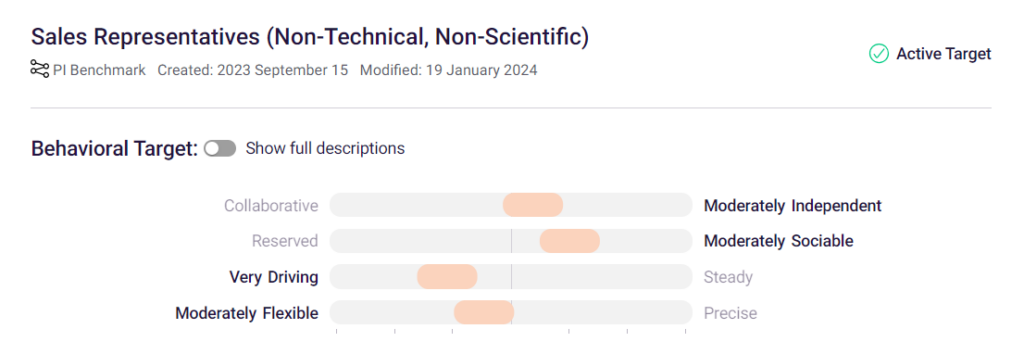
Notice the section titled Behavioral Target. With PI, we use benchmark data like the above to predict the ideal combination of behavioral traits needed for on-the-job success. The four orange bars represent our target. The target looked good to me, but I made one adjustment. Anyone I hired would need to have higher Dominance than the benchmark data suggested. I wasn’t just looking for a BDR; I was looking for a future Account Executive. And that person would need to be comfortable with conflict.
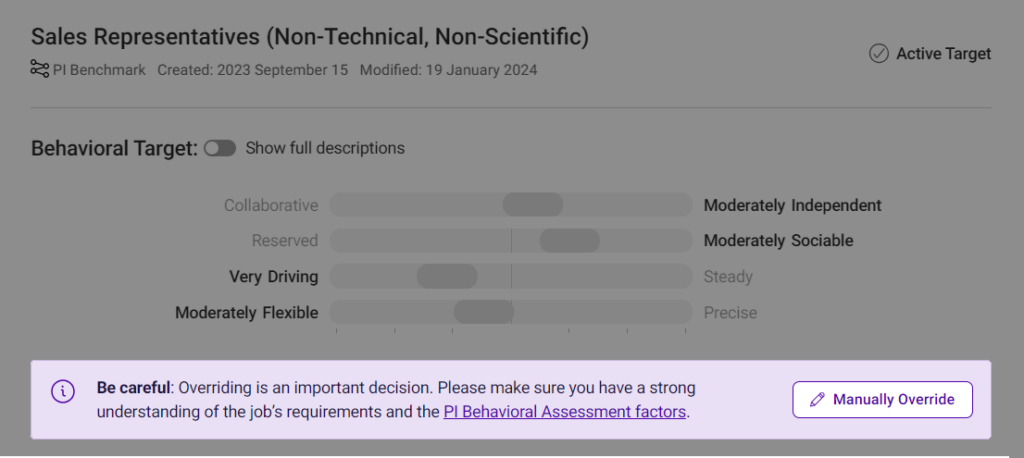
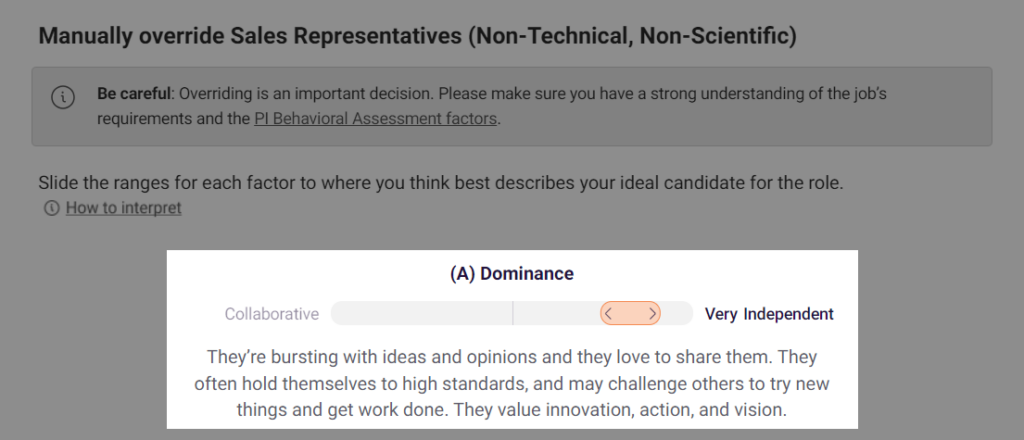
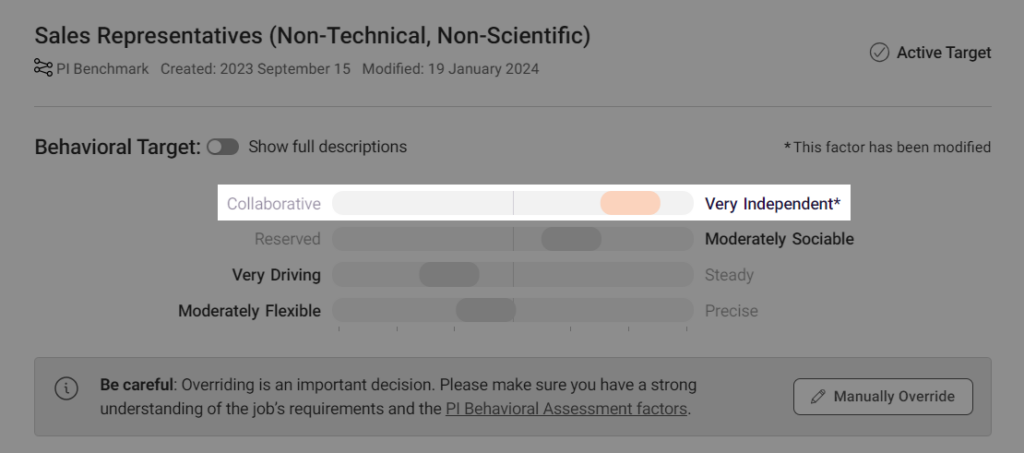
The software then prompted me to send out the PI Behavioral Assessment. A two-question, six-minute survey, the Behavioral Assessment helps you measure any person’s behavioral profile. In this case, I posted a job ad, included a link to the assessment, and watched as candidates rolled into the system.
An immediate standout appeared named Alexandra. Clicking into her candidate profile, I quickly saw why. While her behavioral profile wasn’t a perfect match, it was close. PI illustrated this by taking the BDR Behavioral Target and overlaying Alexandra’s assessment results. A 3-star fit rating further emphasized that she was worth following up with.
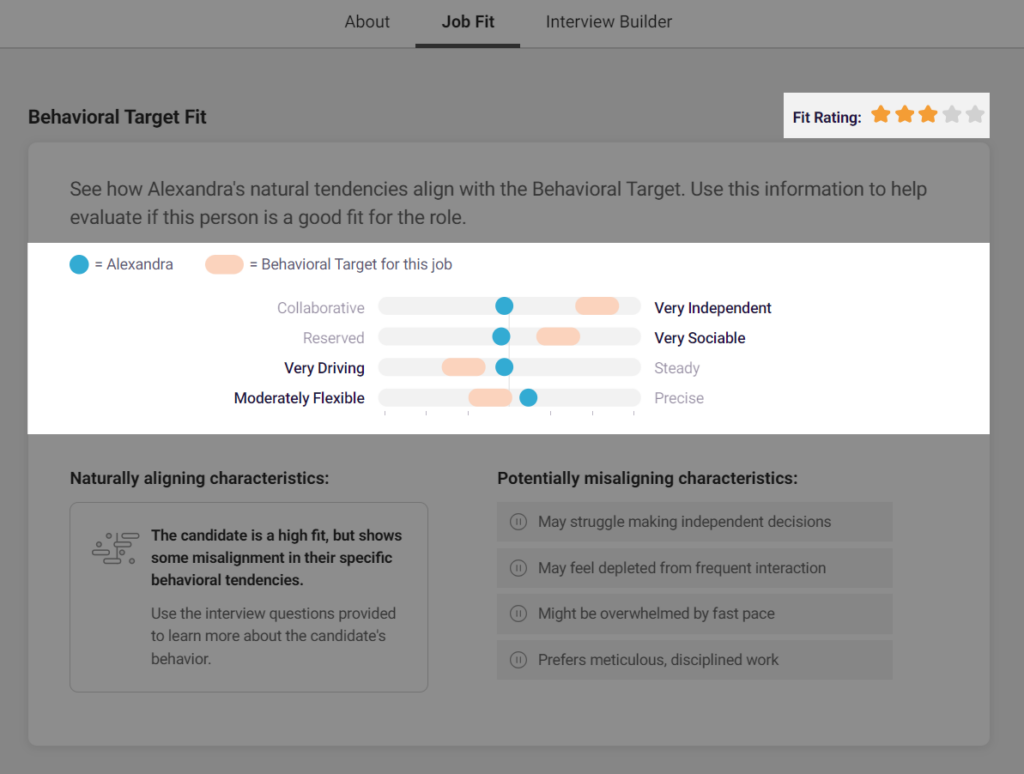
Confirming candidate fit
Alexandra’s profile looked good on paper, but I needed to confirm those credentials. I came up with a list of non-negotiables. The ideal BDR would be:
- Competitive and proactive
- An active listener
- Great at asking questions
- Comfortable with rejection
- Resilient
Looking at the job target, I noticed Alexandra was a Specialist. This profile is known for being cautious and introspective—traits that are somewhat at odds with the frenetic, extraverted world of sales. These were areas of misalignment I knew I needed to dig into. Thankfully, PI features an Interview Builder tool that generates interview questions to help do just that.
When it came time to interview Alex, I brought up the client-facing nature of the role and asked if she could provide an example of when she was forced to overcome rejection. She answered with aplomb. I went down the list of interview questions suggested by the software. Each answer impressed me more than the last.
Naturally, I hired her.
Building a balanced team
As I onboarded Alex, one thing stood out to me. Her Formality drive was high, suggesting she values rules and structure and prefers getting things right on the first try. Yet, sales is a relatively low-Formality field. Compared to the majority of her peers, she might:
- Have a lot of questions before starting a task
- Want some practice before feeling ready to jump in
- Ask for examples of others doing a task the “right” way
- Require additional guidance to do her job well
If I didn’t know this information ahead of time, I may have thought, “Wow, why does Alex have so many questions? Other people seem to just get it and go do it. What’s the matter?”
But instead, I do know—and we celebrate it. Whenever I announce a change in strategy or give directions to the group, I wait, smile, and ask, “Alex, what did I miss? What questions do you have?” She laughs and tells me exactly where I wasn’t clear. You see, Alex catches important mistakes or specifics that may normally go unnoticed were it not for her attention to detail.
In short, Alex’s differences make us better.
Hiring isn’t just about finding the right fit for the role. It’s also about finding the right fit for the team. By bringing Alex into the fold, we gained someone who brought balance to our group dynamic.
Alex also has a higher Patience drive than most on the team, which has helped her perfect her skills as only a Specialist can. Walk the sales floor at PI, and you’ll catch her throwing darts in between calls, perfecting her throw. I watched her hustle a few people in games because they didn’t realize just how hard she worked at it.
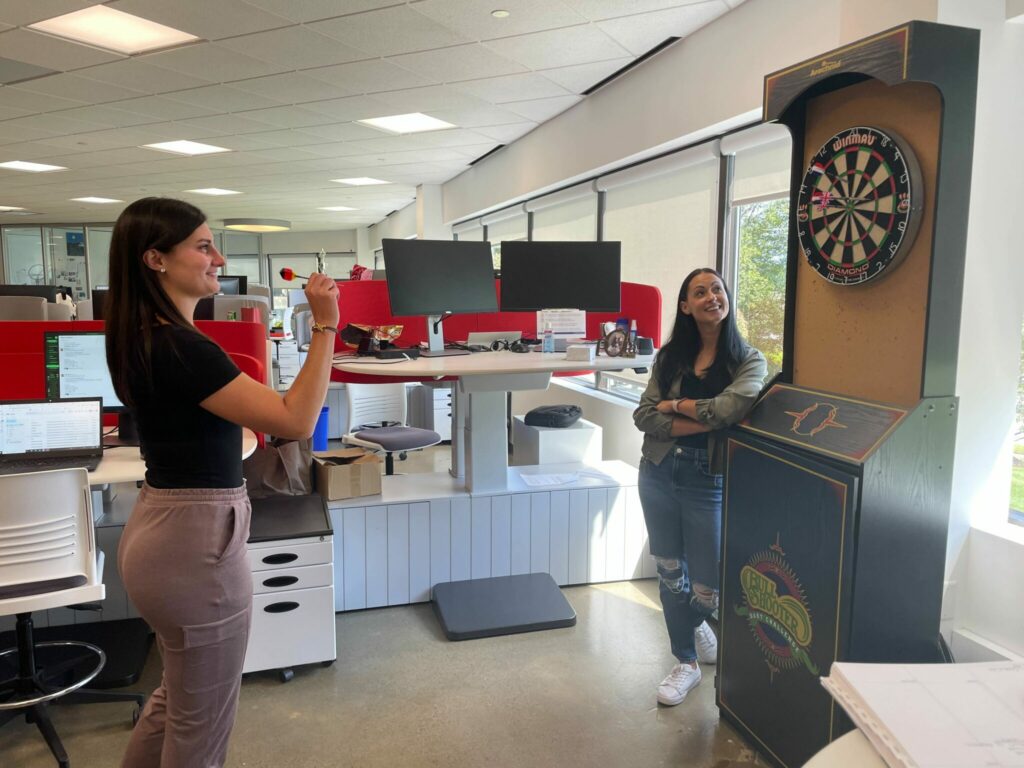
Stop chasing unicorns. Start finding gems.
I hired Alex back in 2021 and couldn’t be happier.
Yes, it takes her more practice than others to learn a skill. But like any Specialist worth their salt, she persistently works at her craft to master it. Case in point: She now leads the entire sales team in close rate.
Hiring someone like Alex shouldn’t be an anomaly. Any organization can make great hires like we do—provided you equip yourself with the proper data. PI Hire leverages both behavioral and cognitive assessments to help you make informed hiring decisions and find personalities with incredible potential.
Hire like your competitors do, and you’ll be rejecting candidates based on arbitrary factors like “He was shy!” or “She doesn’t have 10+ years of experience.” Likewise, treat hiring like a pass/fail exercise, and don’t be surprised when your new hires either sink or swim. In this race for talent, you can’t afford a mishire to set you back weeks or months.
Know your candidates, hire them with confidence, and invest in their strengths. Do this, and you’ll have a cohort of future leaders while your competitors search for unicorns that don’t exist.








